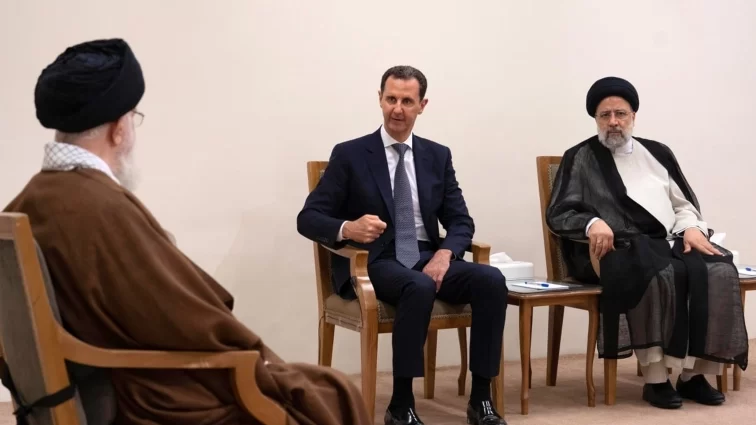During Assad’s recent surprise visit to Iran, he spoke with a special focus on concluding a “new phase” of the Iranian-Syrian credit line. This agreement will cover supplying Syria with energy and other basic goods to meet local shortages.
According to Syrian and Iranian media reports, Assad and Khamenei’s meeting in Tehran last Sunday ended with an agreement on the credit line for energy products, along with Iranian pledges and assurances of support for the regime’s government. At present, the regime’s government is suffering from a severe economic crisis.
To date, the two sides have not announced the value of the new credit line or any other related details.
Starting in 2013
Since 2012, Iran started issuing official directives to open credit lines to Syria, as part of its support for the Syrian regime. The regime was suffering from a diplomatic and economic boycott over its repression of popular, anti-regime protests.
However, the activation of the first Syrian-Iranian credit line began in 2013, between the Syrian Commercial Bank and the Iranian Export Development Bank, which was then worth US$1 billion. The loan came with “soft” interest terms, according to the two sides.
Read Also: Syria’s Assad Meets Top Iranian Leaders in Surprise Tehran Visit
In the same year, another $3 billion credit line was announced, which was allocated to supply oil derivatives to the Assad regime, in response to economic hardship as a result of European economic sanctions.
In 2015, the two sides announced the opening of a new $1 billion credit line, as a result of an agreement between the regime’s Syrian Commercial Bank and the Iranian Export Development Bank. The credit facility was allocated by the regime’s government to import goods and implement local projects.
Since that year, the two sides have not announced the opening of new credit lines. But the past few years have been punctuated by the signing of economic agreements between the regime and Iran, particularly in the area of reconstruction, railways, electricity, and other key sectors in Syria.
The announcement of the signing of a new phase for the Syrian-Iranian credit line — which occurred during Assad’s recent visit to Tehran — coincides with the fuel and energy crisis suffered by the regime’s government. The crisis has emerged due to the Russian war on Ukraine, the decline of Russian support for the regime, and the interruption of Iranian oil access to regime-controlled areas.
What does “credit line” mean?
The international credit line is meant to provide financial facilities and concessional interest loans, granted by banks and other financial institutions in one country. The loans are provided to customers in another country, within a specifically agreed value.
Under the agreement, the maximum amount that a customer can borrow is set. He or she can obtain that amount at any time, as long as it does not exceed the ceiling — provided that the loan is repaid within an agreed timeframe between the two sides.
The same amount can be re-borrowed after repayment, as credit lines are subject to interest deemed “soft” — especially if the loan is insured.
Stated targets and Iranian concerns
According to previous Iranian statements, the objective of the credit line between the regime and Iran is to bypass the sanctions imposed on both countries, especially for the regime government. These funds will contribute to easing the economic pressures caused by war and sanctions.
As the Caesar Act came into force in June 2020, Iran’s then-Foreign Minister Mohammad Javad Zarif spoke of Iranian economic support for the regime. He said that “Syria has a credit line with Iran,” saying that the credit line would contribute to stabilizing the regime in the face of sanctions.
From its perspective, Iran is seeking to stabilize its economic progress in Syria by concluding agreements that would mutually benefit Iran and the Assad regime — especially in light of Iranian fears that Iranian influence in Syria will decline at the expense of Russian economic influence.
Since the beginning of 2021, Tehran has been wary of its weak economic and investment penetration in Syria.
Iran, a supporter of the Assad regime, has worked over the past few years to conclude economic and military agreements with the regime’s government. Some observers view these developments as an effort to gain Assad’s support, as the regime began repaying amounts owed to Russia and Iran for their intervention on the regime’s behalf, which turned the military situation in the regime’s favour.
However, recent statements by Iranian officials have revealed resentment in Tehran, which has been accused of showing “weakness” in its share in Syria’s economic and trade agreements.
This article was translated and edited by The Syrian Observer. The Syrian Observer has not verified the content of this story. Responsibility for the information and views set out in this article lies entirely with the author.


